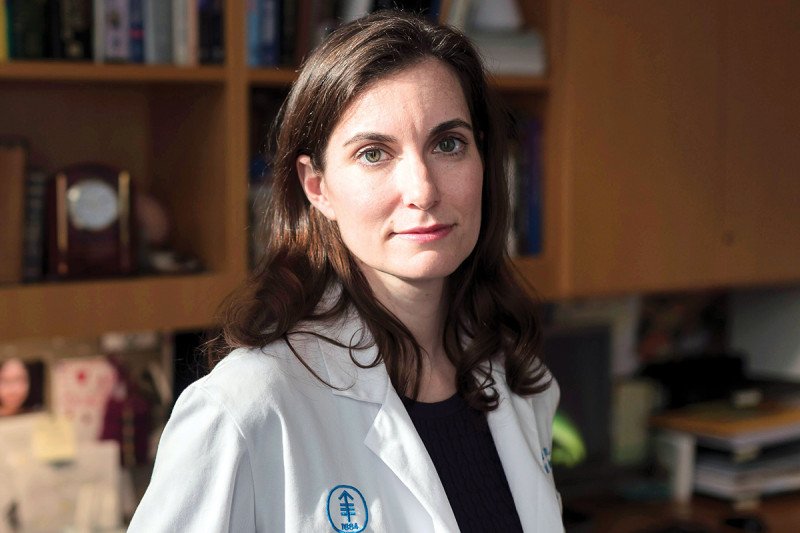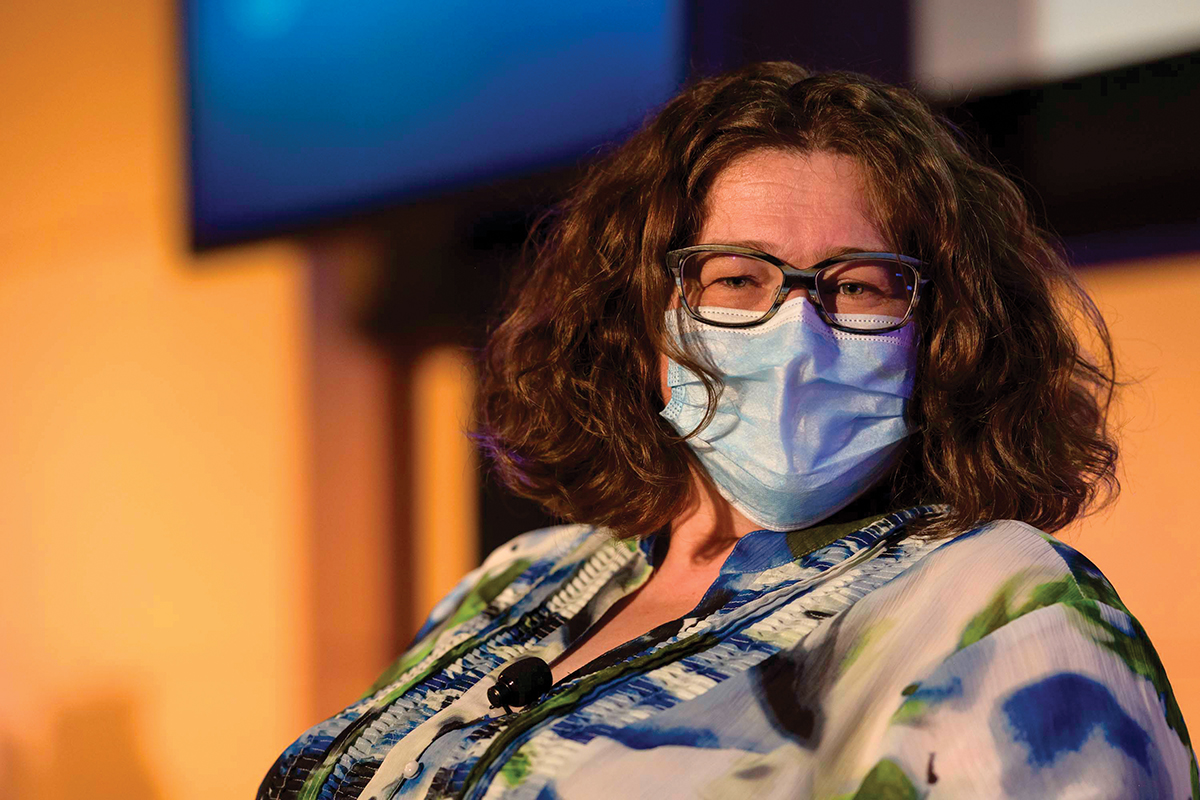
An unforgettable encounter with a patient inspired neuro-oncologist Adrienne Boire to devote her scientific career to conquering a form of metastatic cancer.
Neuro-oncologist Adrienne Boire was at a loss for words. Her patient was upset and couldn’t understand how her breast cancer — seemingly under control — had spread to her spinal fluid. Now the woman could no longer walk, had terrible headaches, and had lost bowel and bladder control. She was suffering the devastating effects of a form of metastatic cancer called leptomeningeal metastasis (LM).
Inside My Lab: Adrienne Boire
“She had a lot of questions for me about why this was happening and why there weren’t better treatments, and I didn’t have any good answers for her,” Dr. Boire recalls. “She said, ‘I really wish someone would figure this out,’ and all I could think was, ‘Me too.’”
With that difficult conversation still very much on her mind, Dr. Boire crossed the street from Memorial Hospital to Zuckerman Research Center, where she was a research fellow in the laboratory of Sloan Kettering Institute Director Joan Massagué. “I pushed the revolving door into Zuckerman and suddenly realized, ‘This woman is telling me what I should be doing with my life.’”
Dr. Boire turned around, went straight back to the woman’s hospital room, and sat with her, taking notes. “We came up with a list of questions together and then I went right to the lab and got to work,” she says. The year was 2014. Sadly, the woman died, but her memory lives on through Dr. Boire’s determination to solve LM, an increasingly urgent clinical problem. With cancer patients living longer because of better treatments, it means there is more time for the disease to spread to the spinal fluid and wreak havoc.
Six years later, Dr. Boire’s resolve to crack the mystery of this daunting complication has already produced critical insights and raised hopes for an effective treatment. The discoveries resulted from MSK’s unparalleled combination of clinical and laboratory expertise.
Hardy Cancer Cells
These key findings relate to something that has long puzzled researchers: how LM cells manage to survive in spinal fluid after spreading there. The brain and spinal cord are largely sealed off from the rest of the body by a tight barrier and the space is devoid of nutrients to support cell growth.
In 2017, Dr. Boire and colleagues in the Massagué lab studied human LM cells in mice. They found that a protein called C3 opens the membrane between the blood and spinal fluid and allows growth factors and nutrients from the blood to enter and sustain the cancer cells.
This discovery, however, did not fully explain how LM cells survived in the mostly barren environment. Immune cells also invade the spinal fluid and vastly outnumber the cancer cells, competing for the same nutrients. Yet some of the cancer cells persevere. The question was: How? The only way to find this secret power would be to study the activity of the individual cancer cells in exquisite detail.

Computational biologist Dana Pe’er used her expertise in single-cell analysis to help Dr. Boire study metastatic cancer cells individually, offering a deeper understanding of their activity and how they adapt to new environments.
To conduct this kind of deep analysis, Dr. Boire — who now leads her own lab — collaborated with SKI computational biologist Dana Pe’er, a world-renowned expert in single-cell analysis. Dr. Pe’er is Scientific Director of the Alan and Sandra Gerry Metastasis and Tumor Ecosystems Center, which was established in 2017 and provides critical funding for metastasis research.
Dr. Pe’er oversees the Single Cell Research Initiative, also supported by the Gerrys’ philanthropy, which uses new technologies to study cancer one cell at a time. This enables researchers to look at RNA rather than DNA within individual cells to determine which genes are expressed, or “turned on.”
“I knew Dana could help me cast a very wide net so we could understand at a really granular level how these cancer cells live in the spinal fluid,” Dr. Boire says.
The researchers conducted a test called single-cell RNA sequencing on fluid samples taken from five patients who had developed LM that had spread from breast or lung tumors. This revealed many differences in RNA activity among the cancer cells — even within the same sample. But all the cancer cells shared one critical feature: They reprogramed themselves to produce a protein called lipocalin-2. This protein binds to iron, which LM cells need to survive.
“Normally, only immune cells can turn on the set of genes to make the lipocalin-2 protein,” Dr. Pe’er says. “The cancer cells not only access this genetic program but hyper-charge it to work a thousand times more efficiently than in the immune cells.”
Breaking the Cancer Cells’ Grip on Iron
MSK is revolutionizing the way cancer is understood, diagnosed, and treated. Your generosity makes this possible.
The increased lipocalin-2 levels enable the cancer cells to monopolize the iron, foiling the immune response that would normally destroy them. It’s like creating a much stronger magnet to pick up more paper clips.
“It shows the very powerful force of evolution in driving these diverse cancers to adapt to the harsh environment by using the one trick that seems to work,” Dr. Pe’er explains. The researchers reported this finding in the journal Science in July 2020.
Identifying the key role played by lipocalin-2 led the researchers to their next question: What if you could cut off access to iron? In mouse models for the disease, they showed that delivering chemical compounds called iron chelators directly into the spinal fluid deprived the cancer cells of their lifeline and slowed their growth. The chelators bind to the iron so less is available to all the cells, taking away the cancer cells’ survival advantage.
“It reminds me of when kids are fighting over a toy and the parent says, ‘That’s it — I’m taking it away. Nobody gets it,’” Dr. Boire says. The researchers are now working to bring this therapy to a clinical trial. It could be the first effective treatment for a condition that has long vexed researchers and clinicians alike.
Dr. Boire says her lab work helps her stay motivated rather than despondent after seeing patients endure such a difficult condition. This incentive is what drove her back to speak with her patient that day in 2014.
“The security guards probably thought I forgot something,” she says, “but it’s more like I remembered something — what I should be doing here.”




